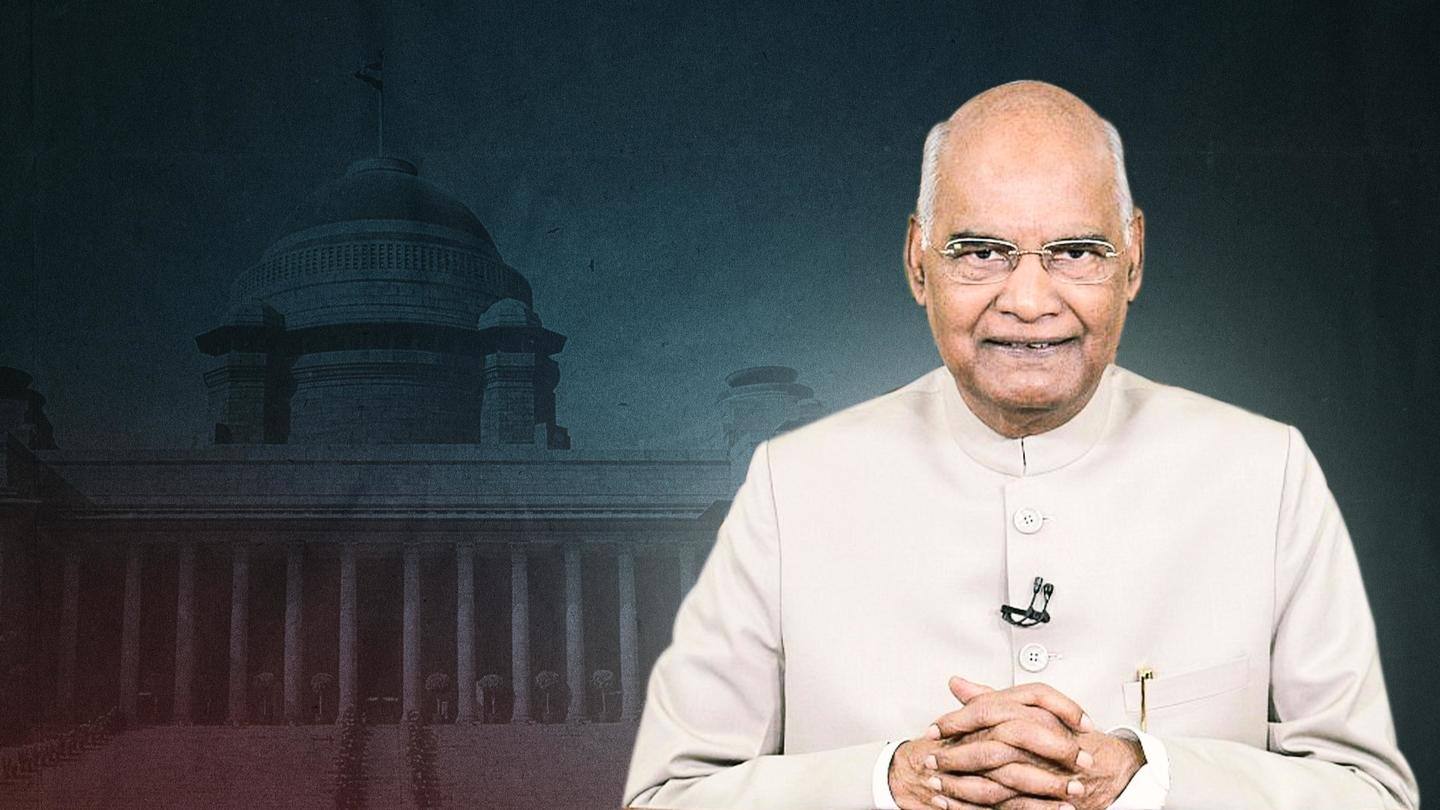#NewsBytesExplainer: How is the President of India elected?
What's the story
Elected Members of Legislative Assemblies (MLAs) and Members of Parliament (MPs) are set to vote on July 18 to elect India's 15th President.
If necessary, the counting will take place on July 21, announced the Election Commission of India (ECI).
The tenure of incumbent President Ram Nath Kovind expires on July 24.
Here, we explain the process of electing the first citizen of India.
Context
Why does this story matter?
With Jammu and Kashmir (J&K) under President's rule as well as three other states—Rajasthan, Chhattisgarh, and Tamil Nadu—controlled by opposition parties, the presidential election would be a tough contest for the BJP-led NDA candidate.
The result of the Rajya Sabha elections will also be critical.
The Opposition parties have also indicated their intention to put up joint candidates for both presidential and vice-presidential elections.
Set of electors
President is elected by an electoral college
In India, the president is chosen by an electoral college comprised of elected members of both Houses of Parliament, representatives of state legislatures, and the union territories of Delhi and Puducherry.
As per the current estimates, the electoral college consists of 776 Members of Parliament (543 Lok Sabha MPs and 233 Rajya Sabha MPs) and 4,809 members of the state Legislative Assemblies.
Value
What determines the value in electoral college?
The electoral college has a total of 10,86,431 votes and the vote of each elector, an MP or MLA, has a fixed value.
The value is set at 708 for each MP.
This figure is derived for each MLA by a formula based on the population of the state they represent (as per the 1971 Census). As a result, the value varies per state.
Populous state
Value of MLAs, MPs in the most populous state
For example, an MLA from the most populous state, Uttar Pradesh, has the highest value of 208 among all states.
Therefore, the value of 403 UP MLAs is worth a total of 83,824.
Moreover, the state's 80 MPs received 56,640 votes, increasing the total value of votes cast by MPs and MLAs in the state to 1.4 lakh, giving them about 12.7% weightage.
Smaller states
How do smaller states matter?
In smaller states like Punjab, the vote value of an MLA is 118.
In Uttarakhand, it is 64, whereas, in Goa, it is 20.
Thus, the overall value of Punjab is 13,572, Uttarakhand 4,480, and Goa 800.
After the nominations are filed, MLAs in their states and union territories and MPs in Parliament are handed ballot sheets on which they vote.
Information
Value of J&K MPs less due to lack of Assembly
Due to the lack of a Legislative Assembly in Jammu and Kashmir, the value of a Member of Parliament's vote is expected to fall to 700 from 708 in the presidential elections slated for July 18.
Details
What factors decide the winner?
The individual who receives the most votes above a particular threshold is declared the victor of the presidential elections.
So, after computing the total number of votes cast for each candidate, the returning officer adds the total number of legitimate votes cast.
The quota is calculated by dividing the total number of valid votes by two and adding one to the quotient.
Winning threshold
What does the winning quota mean?
For example, the legitimate votes cast by all candidates is 1,00,001. The needed quota will be determined by dividing 1,00,001 by two and adding one to the quotient, resulting in 50,000.50 + 1 (0.50, called the remainder, is ignored).
So, the quota will be 50,000 + 1 = 50,001.
If no candidate receives the required quota, the contender receiving the least votes is eliminated.
